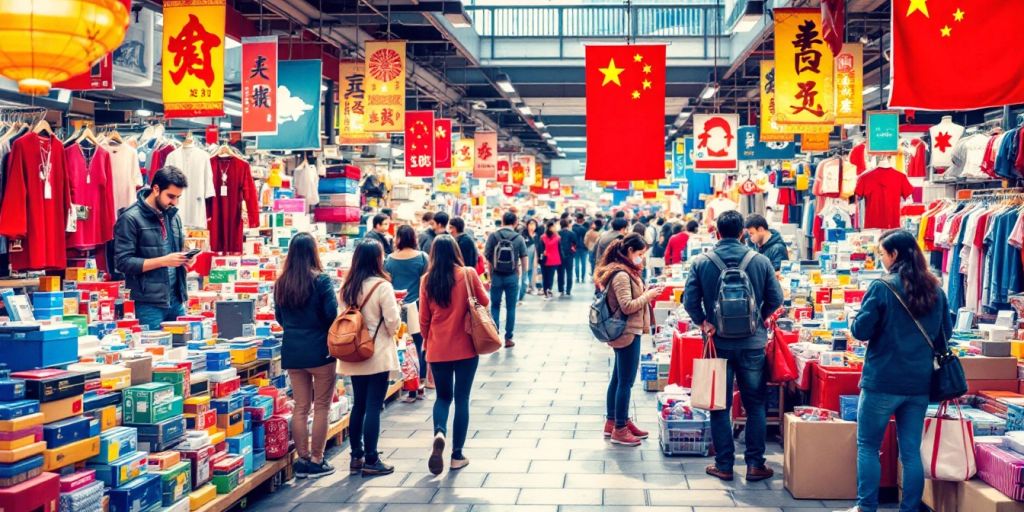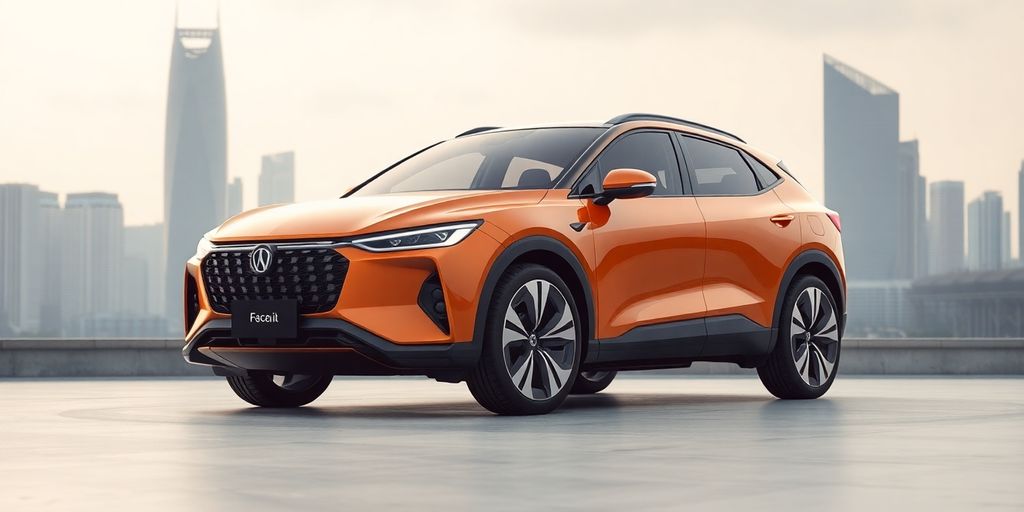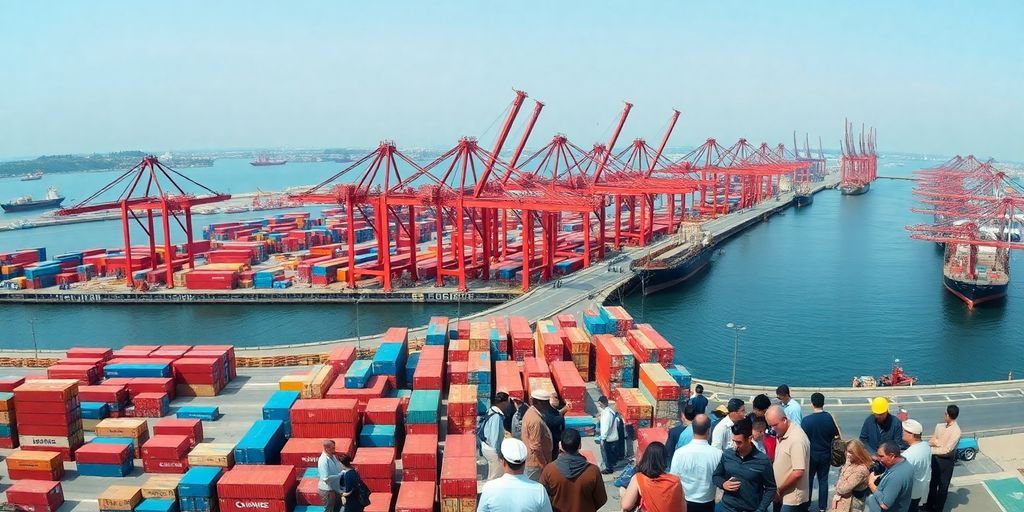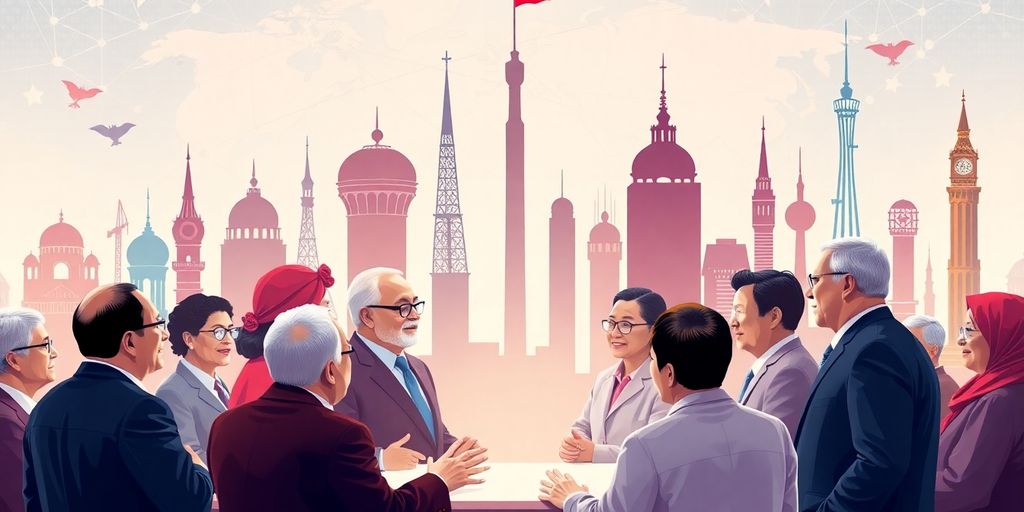How China Triumphs Over Europe Without Firing a Shot: A Deep Dive into Recent Exports

In recent years, China has emerged as a dominant player in global trade, particularly in its relationship with Europe. This article explores how China has managed to expand its influence without resorting to military action, focusing on its economic strategies, Europe’s vulnerabilities, and the technological advancements that have facilitated this shift. By examining these elements, we can better understand the dynamics of Sino-European relations and the implications for the future of global trade.
Key Takeaways
- China has shifted from a manufacturing-based economy to one focused on innovation, enhancing its competitiveness in global markets.
- Europe faces significant challenges, including outdated infrastructure and a reliance on external energy, creating opportunities for Chinese investments.
- Chinese technology, particularly in telecommunications and electric vehicles, is rapidly gaining traction in European markets.
- China’s soft power strategies, including media influence and educational exchanges, are reshaping perceptions in Europe.
- The future of Sino-European trade will require balancing competition with cooperation, especially regarding human rights and sustainability.
China’s Economic Strategy: A New Era of Trade Dominance
The Shift from Manufacturing to Innovation
China is moving away from just making things to focusing on innovation. This change is important because it helps China create new technologies and products that can compete globally. The government supports this shift by investing in research and development.
Leveraging Global Supply Chains
China has become a key player in global supply chains. By connecting with countries around the world, it can produce goods more efficiently. This strategy allows China to keep costs low and meet international demand quickly. Here are some key points about this strategy:
- Strong partnerships with other countries.
- Investment in logistics and transportation.
- Adaptability to changing market needs.
The Role of State-Owned Enterprises
State-owned enterprises (SOEs) play a big role in China’s economy. These companies are supported by the government and help drive economic growth. They often have advantages like access to funding and resources. This support allows them to compete effectively in both domestic and international markets.
In recent years, China’s global trade surplus has more than doubled, reaching over $893 billion in 2023. This growth shows how effective China’s economic strategies have been in expanding its influence without direct conflict.
Europe’s Economic Vulnerabilities: An Open Door for China

Aging Infrastructure and Workforce
Europe faces significant challenges due to its aging infrastructure and workforce. Many countries are struggling to maintain and upgrade their roads, bridges, and public transport systems. This situation creates opportunities for China to step in and offer investments and solutions. Key points include:
- High maintenance costs for outdated infrastructure.
- A shrinking workforce leading to labor shortages.
- Increased competition from emerging economies.
Regulatory Challenges and Bureaucracy
The complex regulatory environment in Europe can be a barrier to quick decision-making and innovation. This bureaucracy can hinder local businesses while making it easier for Chinese companies to navigate the system. Some challenges include:
- Lengthy approval processes for new projects.
- Inconsistent regulations across different countries.
- Difficulty in adapting to rapid technological changes.
Dependence on External Energy Sources
Europe’s reliance on external energy sources makes it vulnerable to geopolitical tensions. This dependence can be exploited by China, which is looking to expand its influence in the energy sector. Important aspects include:
- High energy costs affecting economic growth.
- Vulnerability to supply disruptions from political conflicts.
- Opportunities for Chinese investments in renewable energy projects.
Europe must recognize its vulnerabilities and adapt to the changing global landscape. By addressing these issues, it can better position itself against external pressures, particularly from China.
| Economic Vulnerability | Impact on Europe | Opportunity for China |
|---|---|---|
| Aging Infrastructure | High maintenance costs | Investment in upgrades |
| Regulatory Challenges | Slower innovation | Easier market entry |
| Energy Dependence | Supply disruptions | Investment in renewables |
The Rise of Chinese Technology in European Markets
5G and Telecommunications Expansion
China has made significant strides in the 5G technology sector, establishing itself as a leader in telecommunications. Chinese companies like Huawei and ZTE are expanding their presence in Europe, providing advanced infrastructure and services. This expansion raises concerns about data security and privacy, as many European countries grapple with the implications of relying on Chinese technology.
Electric Vehicles and Green Technology
The demand for electric vehicles (EVs) is soaring in Europe, and China is capitalizing on this trend. In September alone, China exported more than 60,000 electric vehicles to the European Union, marking a significant increase in shipments. This surge highlights China’s commitment to becoming a dominant player in the green technology market, which is crucial for Europe’s environmental goals.
Artificial Intelligence and Data Analytics
Chinese firms are also making waves in the field of artificial intelligence (AI) and data analytics. With substantial investments in research and development, companies like Baidu and Alibaba are pushing the boundaries of what AI can achieve. This growth presents both opportunities and challenges for Europe, as it must navigate the competitive landscape while ensuring ethical standards are upheld.
The rise of Chinese technology in Europe is not just about products; it’s about shaping the future of industries and economies.
In summary, the rise of Chinese technology in European markets is characterized by:
- Rapid expansion in telecommunications, particularly with 5G.
- A significant increase in electric vehicle exports, with over 60,000 units shipped in September.
- Growing influence in artificial intelligence and data analytics, pushing Europe to adapt to new technological realities.
Cultural and Political Influences in Sino-European Relations
Soft Power Through Media and Education
China has been using soft power to influence Europe through various channels. This includes:
- Media Outreach: Chinese media outlets have expanded their presence in Europe, promoting a positive image of China.
- Educational Exchanges: Scholarships and programs for European students to study in China foster goodwill and understanding.
- Cultural Events: Festivals and exhibitions showcasing Chinese culture help build connections with European audiences.
Diplomatic Engagements and Alliances
China’s diplomatic strategy focuses on building alliances with European countries. Key aspects include:
- Bilateral Meetings: Regular high-level meetings between Chinese and European leaders strengthen ties.
- Trade Agreements: China seeks to establish trade deals that benefit both sides, enhancing economic cooperation.
- Joint Initiatives: Collaborative projects in areas like technology and infrastructure showcase mutual interests.
The Belt and Road Initiative’s Impact
The Belt and Road Initiative (BRI) is a significant part of China’s strategy in Europe. Its effects include:
- Investment in Infrastructure: China invests in European infrastructure projects, improving connectivity.
- Economic Opportunities: The BRI opens new markets for Chinese companies while providing growth for European economies.
- Political Leverage: By investing in key projects, China gains influence over participating countries.
The relationship between China and Europe is complex, with both cooperation and competition shaping the future of trade and diplomacy. As the EU navigates its policies towards China, balancing cooperation and competition will be crucial.
The Future of Trade: Balancing Competition and Cooperation

Negotiating Trade Agreements
To ensure a fair and balanced trade environment, Europe and China must engage in effective negotiations. Here are some key points to consider:
- Mutual benefits: Both sides should aim for agreements that benefit their economies.
- Transparency: Clear communication is essential to avoid misunderstandings.
- Long-term vision: Focus on sustainable growth rather than short-term gains.
Addressing Human Rights Concerns
Human rights issues can complicate trade relations. To address these concerns, both parties should:
- Open dialogue: Discuss human rights openly to foster understanding.
- Set standards: Establish clear human rights standards in trade agreements.
- Monitor compliance: Regularly check if both sides adhere to these standards.
Sustainable Development Goals
Sustainability is crucial for future trade. Here’s how Europe and China can work together:
- Invest in green technology: Collaborate on renewable energy projects.
- Share best practices: Learn from each other’s successes in sustainability.
- Joint initiatives: Create programs that promote environmental protection.
In the future of trade, cooperation is key. By balancing competition with collaboration, both Europe and China can thrive in a changing global landscape.
Lessons for Europe: Adapting to a Changing Global Landscape
Investing in Innovation and Technology
To compete effectively with China, Europe must prioritize investment in innovation and technology. This includes:
- Enhancing research and development funding.
- Supporting startups and tech companies.
- Collaborating with universities for cutting-edge research.
Strengthening Internal Markets
A robust internal market is essential for Europe to withstand external pressures. Key actions include:
- Reducing trade barriers among EU member states.
- Promoting local products and services.
- Ensuring fair competition to protect European businesses.
Building Resilient Supply Chains
Europe needs to create supply chains that can withstand disruptions. This can be achieved by:
- Diversifying suppliers to avoid over-reliance on any single country.
- Investing in local production capabilities.
- Establishing strategic reserves of essential goods.
Europe must recognize the importance of adapting to the changing global landscape. By focusing on these areas, it can better position itself against the growing influence of China in the global market.
In conclusion, as competition with China intensifies, Europe must take proactive steps to safeguard its economic interests and ensure a sustainable future.
Conclusion
In summary, China’s rise as a dominant force in Europe is a story of strategic moves rather than military might. Over the years, China has transformed itself into a major player in global trade, becoming the largest exporter to Europe. This shift has been driven by smart policies and investments that have allowed China to build strong ties with various European nations. While some European countries have welcomed Chinese investments, there are growing concerns about the implications of this relationship. As Europe navigates its path forward, it must balance engagement with China while protecting its own interests. The future of EU-China relations will depend on finding common ground and ensuring that both sides benefit from their interactions.
Frequently Asked Questions
What is China’s economic strategy for trade dominance?
China focuses on moving from just making things to being more innovative. They use global supply chains to their advantage and rely on state-owned companies to strengthen their economy.
What weaknesses does Europe have that China can exploit?
Europe faces problems like old infrastructure, a workforce that is getting older, complicated rules, and a heavy reliance on outside energy sources.
How is Chinese technology making its way into European markets?
China is expanding its technology in Europe through areas like 5G networks, electric cars, and advanced artificial intelligence.
What cultural and political influences shape Sino-European relations?
China uses soft power, like media and education, to influence Europe. They also engage in diplomacy and have initiatives like the Belt and Road that impact these relations.
What does the future hold for trade between China and Europe?
Both sides need to find ways to work together while also being competitive. This includes making trade agreements, addressing human rights issues, and focusing on sustainable development.
What can Europe learn from China’s rise in trade?
Europe should invest more in technology and innovation, strengthen its own markets, and create supply chains that are more resilient to changes in the global economy.








Responses